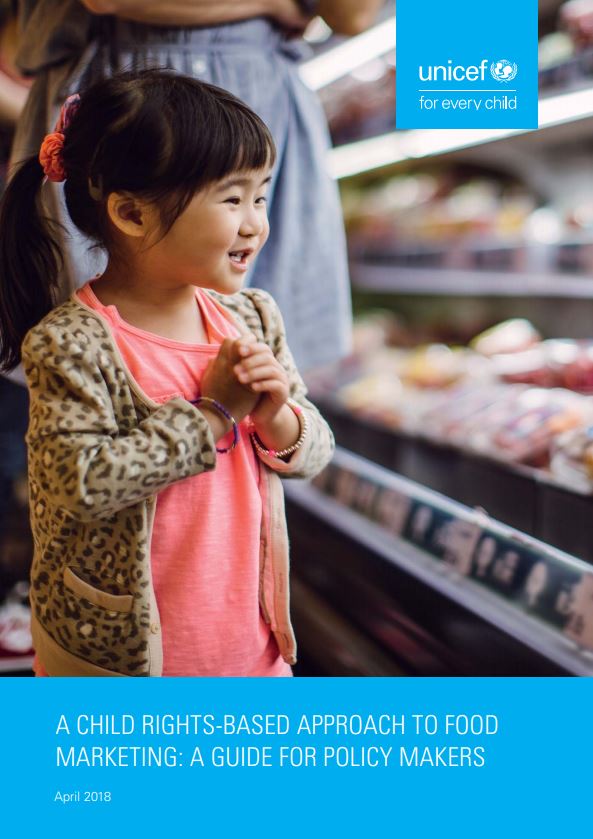Resource Center
Welcome to the UNSCN resource centre. Browse the resource centre by entering a topic or a keyword.
A Child Rights-Based Approach to Food Marketing: A Guide for Policy Makers

Evidence gathered over the past 20 years indicates that marketing of unhealthy food is a key contributor to the growing rates of child overweight. New marketing channels, ever-evolving techniques, and escalating exposure, have a proven and powerful negative effect on children’s food preferences, purchase requests and consumption patterns.
To date, legislation and self-regulatory policies designed to protect children from marketing of unhealthy food have focused on two fronts: 1) a narrow definition of marketing that excludes many types of commercial content such as branded sponsorship; and 2) children’s evolving capacities, including the age at which children develop the ability to identify commercial intent. These approaches are problematic as they fail to consider the full range of ways in which children of all ages are negatively affected by marketing of unhealthy food.
A Child Rights-Based Approach to Food Marketing: A Guide for Policy Makers by UNICEF uses a wider definition of marketing and adopts a child rights-based approach to food marketing. The report advocates that the Convention on the Rights of the Child and the recommendations by the World Health Organization on the Marketing of Foods and Non-Alcoholic Beverages to Children -- unanimously endorsed in 2010 by the 63rd World Health Assembly -- should be the foundation of the rights-based framework used by governments and businesses to protect children from marketing of unhealthy food.
